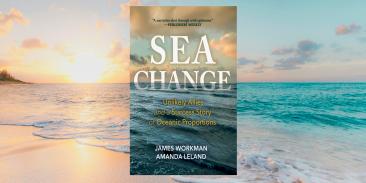EPA Proposes Plan To Reduce Dead Zone In Gulf Of Mexico
Environmental Defense today praised the Environmental Protection Agency (EPA) for its proposed plan to reduce the 8,000 square mile “dead zone” in the Gulf of Mexico and called on Congress to provide incentives for reducing polluted runoff to protect the Gulf in the next Farm Bill.
The EPA report released today concludes that fertilizer and manure are being washed into the Mississippi River, causing dissolved oxygen levels in the Gulf of Mexico to fall too low to support marine life, a condition called “hypoxia” by scientists.
“The next Farm Bill will help decide the future health of the Gulf of Mexico,” said Scott Faber, a water resources specialist for Environmental Defense. “Many farmers are implementing practices that help combat hypoxia, but nearly as many farmers who want to help are being turned away due to inadequate federal funding.”
Environmental Defense called on Congress to expand incentive programs administered by the US Department of Agriculture, including programs that pay farmers to restore lost wetlands, retire environmentally-sensitive lands, install buffers of trees and grasses along streams, and implement other practices that reduce fertilizer use or that intercept and filter polluted runoff. Environmental Defense also urged Congress to create new programs to reuse manure. Congress may reauthorize federal farm programs this year.
“Federal farm programs fail in two ways, by failing to reward farmers who are taking steps to combat polluted runoff, and by encouraging farmers to grow surplus crops that not only lower crop prices but contribute to high amounts of polluted runoff,” said Faber. “Most farmers are willing to do their part, but Congress needs to give them the proper tools and incentives.”
“Many of the practices that would reduce fertilizer use also reduce demand for natural gas, help combat climate change, and restore habitat for rare species,” said Faber.
To read the EPA report, visit www.epa.gov/OWOW/msbasin/organ.html.
With more than 3 million members, Environmental Defense Fund creates transformational solutions to the most serious environmental problems. To do so, EDF links science, economics, law, and innovative private-sector partnerships to turn solutions into action. edf.org
Latest press releases
-
Trump Administration Announces Unlawful Offshore Wind Halt
December 22, 2025 -
Governor Hochul Repeals "100-Foot Rule," Accelerating New York's Clean Energy Future
December 19, 2025 -
Colorado Air Regulators Approve Landfill Methane Standards
December 18, 2025 -
Proposal Would Guarantee Public Access to Air Quality Data
December 18, 2025 -
New Bill Will Help Keep Domestic Manufacturers Competitive
December 17, 2025 -
Satellite Data Shows Colorado Oil & Gas Methane Emissions Dropped as State Rules Took Effect
December 17, 2025










